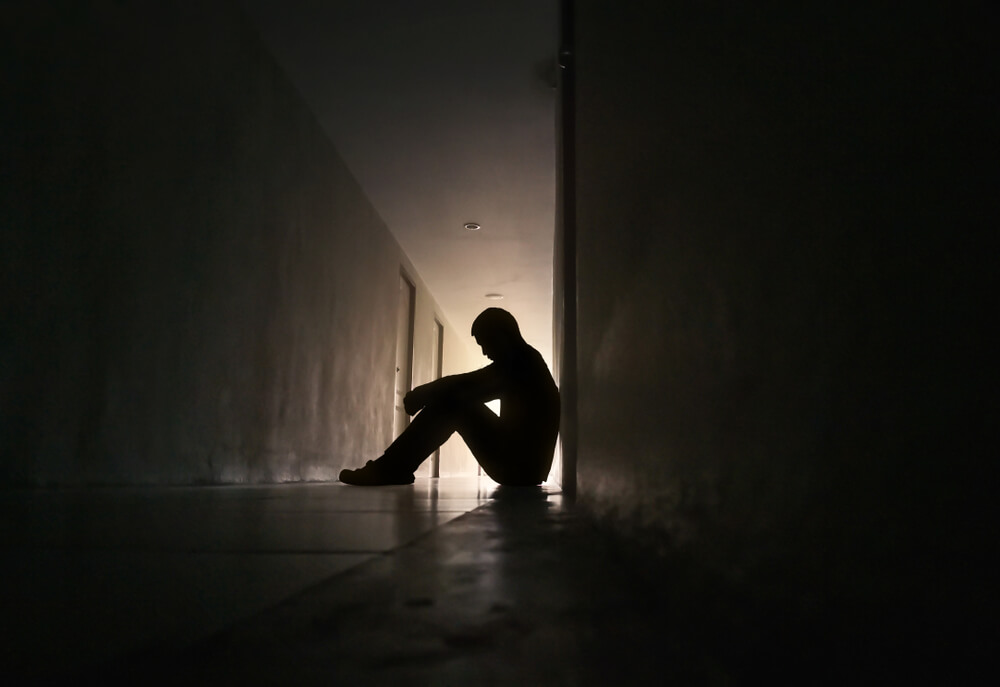Much of modern life moves at a rapid, unrelenting pace. This ongoing flood of obligations, information, and stimuli can easily escalate feelings of discomfort and overwhelm into genuine anxiety. Unfortunately, such experiences are not rare. As per the Anxiety and Depression Association of America, anxiety disorders affect 40 million adults in the US every year, making it the most prevalent mental illness.
This extensive reach underlines the vital need for a more comprehensive understanding of the physical symptoms of anxiety. Unfamiliarity can often lead to misinterpretation, with anxiety’s physical manifestations sometimes mistaken for signs of other health conditions. More importantly, knowing what anxiety feels like physically is the first step towards recognizing its oncoming grip and taking timely steps to manage it.
Mental health counseling is a crucial step to becoming more stable and anxiety-free, so make sure you do proper research and choose a good, suitable medical professional. At Carreras Medical Centre, the team is experienced in working with persons with mental health difficulties and conditions so this might be a good place to start.
Modern healthcare plays a paramount role in this process. Mental health professionals, with their in-depth knowledge and therapeutic strategies, can provide support and guidance. However, an essential part of managing anxiety is personal insight. The onus is on us to understand our physical and psychological responses deeply—because the earlier we can identify the signs of anxiety, the better we can navigate the path to wellbeing.
Description of Anxiety and Its Psychological Impact
For those unfamiliar with the experience, living with anxiety can be an enigma. A feeling that is easily underestimated in its complexity and multi-dimensionality. This mental health disorder exerts both an emotional and physical impact, deeply influencing an individual’s perception of themselves and their surroundings.
Anxiety’s Effect on the Brain
In the throes of anxiety, the brain shifts into survival mode. The amygdala, which is associated with our emotional responses, becomes hyperactive. It sends a distress signal to the hypothalamus—a control panel in the brain—which responds by activating the sympathetic nervous system. This results in both the psychological effects of anxiety and the physiological response we often refer to as the “fight or flight” response.
Meanwhile, the prefrontal cortex—the rational part of our brain that can put things into perspective—becomes less active. This imbalance between emotional and rational responses contributes to the feelings of fear and unease commonly associated with anxiety.
Overview of Common Cognitive Symptoms and Anxieties
The symptoms of anxiety are many, and all fuzz together into a weighted cloud:
- difficulty in concentrating,
- constant worry,
- irrational fear,
- negative prediction.
It is these cognitive responses that often have the most significant impact on daily life. The continuous feeling of impending doom and the constant focus on worst-case scenarios can control an individual’s every thought and decision.
Anxiety disorders may also manifest in more specific ways. Phobias, or intense fears about certain things or situations, are forms of anxiety disorders. So are social anxiety disorder and separation anxiety, each with its unique set of cognitive symptoms. Panic attacks, triggered by overwhelming anxiety, are other signs of an underlying disorder and a signal that professional help is necessary.

Explanation of Anxiety’s Physical Symptoms
Understanding anxiety’s physical sensations helps augment our perspective of its multifaceted effects. The physical symptoms of anxiety often serve as tangible signs of the turmoil happening beneath the surface, giving insight into an otherwise invisible struggle. The distress inside the mind is powerful enough that it can manifest in the body, sometimes in ways that can seem unrelated to anxiety at first glance.
Breakdown of Common Physical Manifestations of Anxiety
People living with anxiety are no strangers to the uncomfortable and sometimes alarming physical symptoms it can produce. What does anxiety feel like in physical terms? For many, the heart pounds in the chest, and breaths come in short, shallow gasps. Some people report tension headaches and muscle stiffness, while others may experience nausea, trembling, and dizziness. These symptoms can vary widely from person to person, but they share common ground in the distress they case.
There is also the phenomenon of ‘anxiety-induced discomfort’, wherein the increased awareness of bodily sensations—part of the symptoms experienced in anxiety disorders—can enhance perceived physical discomfort. These symptoms are not merely psychological – they are real, physical experiences triggered by the anxiety within.
Discussion on How These Physical Symptoms Impact Daily Life
The physical effects of stress and anxiety have far-reaching implications on a person’s day-to-day life. Their impact can bleed into everything, from personal relationships to productivity at work. Anxiety can morph ordinary tasks into challenges, turning life into a maze of avoidance and fear.
Anxiety physical symptoms add another layer of complexity to living with anxiety. For instance, constant heart palpitations or headaches can make an individual overly concerned about their physical health. These concerns can then add to existing anxious thoughts and feelings, inadvertently leading to a vicious cycle where anxiety begets more anxiety.
Additionally, sources of anxiety, such as societal judgments or expectations, can exacerbate these physical symptoms. Maintaining awareness of one’s physical sensations, recognizing that they result from anxiety and not a physical disorder, can be a crucial part of managing anxiety.
The Role of Healthcare in Recognizing and Managing Anxiety
Healthcare providers play an integral part in the understanding and management of anxiety disorders. Their expertise provides insight into the complexities of anxiety, guiding affected individuals toward recovery. Recognizing anxiety disorders and their myriad symptoms is a joint effort between the individual experiencing anxiety and the healthcare provider.
Importance of Identifying Anxiety’s Physical Symptoms in Seeking Proper Treatment
One of the significant steps in managing anxiety is recognizing that what you are feeling is indeed anxiety. That’s where understanding the signs of anxiety comes in. Many physiological symptoms accompany the experience of anxiety. Being aware of these physical manifestations aids in accurate diagnosis and effective treatment.
Going beyond common knowledge of the effects of stress, familiarizing oneself with the specific symptoms of anxiety—ranging from expected manifestations like rapid heartbeat and breathlessness to less obvious signs like digestive issues and unexplained aches—serves as the first step to seeking professional help. Open communication with healthcare providers about these symptoms can provide a comprehensive view of the individual’s anxiety condition, helping them tailor an effective treatment plan.
Use of Preventive Care and Effective Management Strategies in Dealing with Anxiety
Healthcare’s role in managing anxiety is not solely focused on treatment—it also emphasizes the importance of preventive care. Preventive strategies, such as relaxation techniques, mindfulness practices, and lifestyle modifications, can significantly aid in reducing anxiety symptoms.
Apart from preventive care, healthcare providers can help individuals develop effective coping mechanisms. This may involve cognitive-behavioral therapy, which encourages individuals to examine their anxiety triggers and find healthier ways to respond to them. For some, medication may also be a helpful part of managing their anxiety.
In a broader perspective, the role of healthcare and scientific research is continuously evolving in providing better solutions to living with anxiety. As understanding deepens – through ongoing research and discussion – we will come to better approaches to managing anxiety. These advances not only benefit those with existing anxiety disorders but assist in protecting individuals at risk.
Understanding and Managing Anxiety: A Path Toward Wellbeing
The understanding of anxiety is multi-dimensional, featuring diverse physiological and psychological aspects. In the interplay of emotions and physical discomfort that anxiety engenders, it’s easy to overlook the weight carried by each physical symptom. Yet, every sensation, from a racing heart to a constricted chest, is crucial to understanding the full picture of what anxiety truly feels like.
Recognizing anxiety’s physical manifestations is not about diagnosing oneself but about enhancing personal insight into one’s mental health. The knowledge of these symptoms can serve as a guiding light, illuminating the path to appropriate care and resources. Understanding prompts action, and action is the first step toward recovery.
Answering the question, “what does anxiety feel like?” is admittedly complex. It opens a window to understanding the individual experience with anxiety — the disquiet in the mind radiating out to the body. Consequently, comfort does not merely come from recognition but also from the knowledge that these sensations are shared, that they are not solitary in their experience.
Despite the strides made in spreading awareness about anxiety disorders, seeking professional healthcare remains paramount in effectively managing these symptoms. Mental health professionals provide the necessary guidance, support, therapy, and potential medication that can help individuals regain command over their lives impacted by anxiety.
In the face of anxiety, remember that support is available, and no one has to navigate this journey alone. With understanding and care, managing anxiety is achievable. It may take time and patience, but the path toward wellbeing is within reach. To get proper support and guidance call us today! We are waiting for you.


